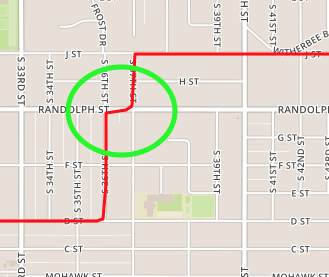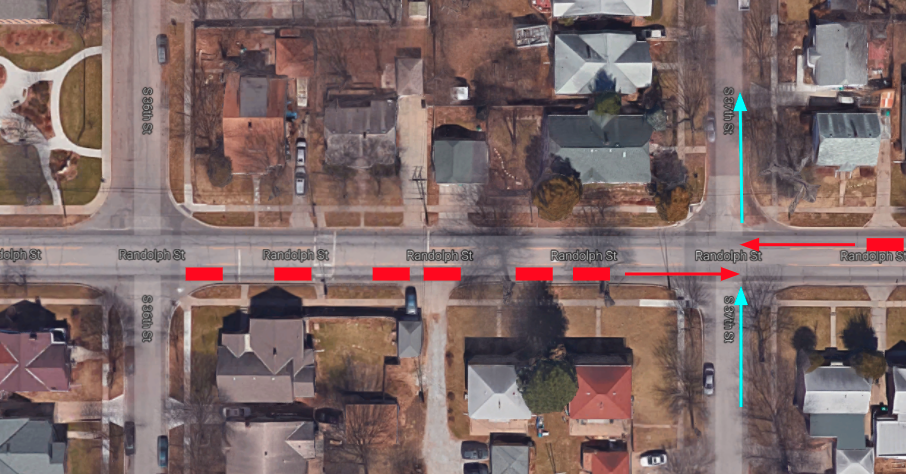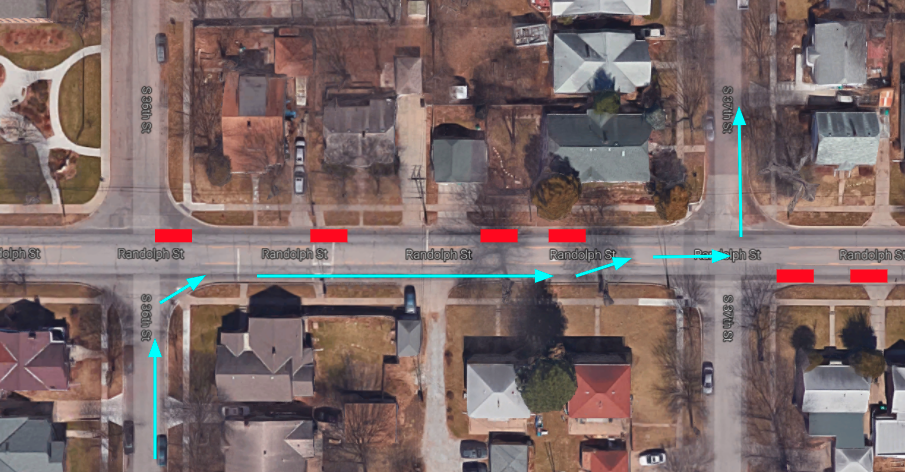No matter how many trails and quiet residential streets you incorporate into your bike route, one fact remains: You will still have to cross busy streets.
Sometimes you’ll have a traffic signal to stop cross traffic. You can even trigger the signals with your bike. When it works, it’s slick. You roll up over the sensor, you wait for your green light, you wait for one or two drivers to run their red light in front of you (snark intended!), and you proceed.
Most of the time you cross a busy street, however, you’re rolling up to a stop sign. If you’re commuting, you’re likely attempting to cross that street at its busiest times of day. With two-way streets, it never fails: Once one direction clears, traffic starts coming at you from the other. This repeats indefinitely, until you’ve got a line of vehicles with angry drivers behind you. (Never mind that you’d be equally stuck if you were in a car.)
I have several streets like this on my commute, so I’ve tried everything from crossing at different streets to making use of mid-block pedestrian lights in front of schools. Lately, I found a simple solution to cross one stream of traffic at a time: a zig-zag.
Here it is on my daily commute:

Here’s Randolph St., where I cross it at 37th. The blue arrows show my path of travel, before I started zig-zagging:

Looks easy to cross, right? But every day, I get caught here. It seems like the lights at 33rd and 40th are conspiring to send a steady flow of traffic across my path from both directions. This is a school zone, too, so traffic moves by very slowly. There is a mid-block pedestrian signal between 36th and 37th, for the Saint Teresa’s schoolkids, but using it requires riding on the sidewalk (legal here, but generally inadvisable). I imagine drivers aren’t thrilled with anyone, schoolkid or (especially) cyclist, who pushes that light and makes them stop in a school zone.
So, what to do? Lately I’ve been doing a zig-zag. I turn a block sooner and go down 36th instead, so that I can jog over one block using Randolph.

So, when there’s a gap in the traffic coming from the closest lane, I make a right turn onto the street I want to cross. Then I use the turn lane to wait for the traffic on the far side to clear and make a left turn. It adds an extra couple of blocks’ distance to my ride, yes – but I never have to wait long to make either my right or left turn, so it ends up saving a lot of time. The maneuver is entirely “vehicular” – no jumping from street to sidewalk and back. And it’s an easy way to thread between the two streams of traffic without interrupting either one of them.
Yes, this “if you can’t beat ’em, join ’em” approach to jumping onto the busy road you’re trying to cross might seem a little insane, but it’s never been hard to find a big enough gap on the near side of the road to ride for less than a block without forcing any drivers to pass. You will, however, want to signal your left turn and look to your left before you move left, just in case any vehicles are behind or beside you.

I do the same thing with 27th and N Street. Right onto 27th from M, pedal into the turn lane, left on N. Great technique to point out.